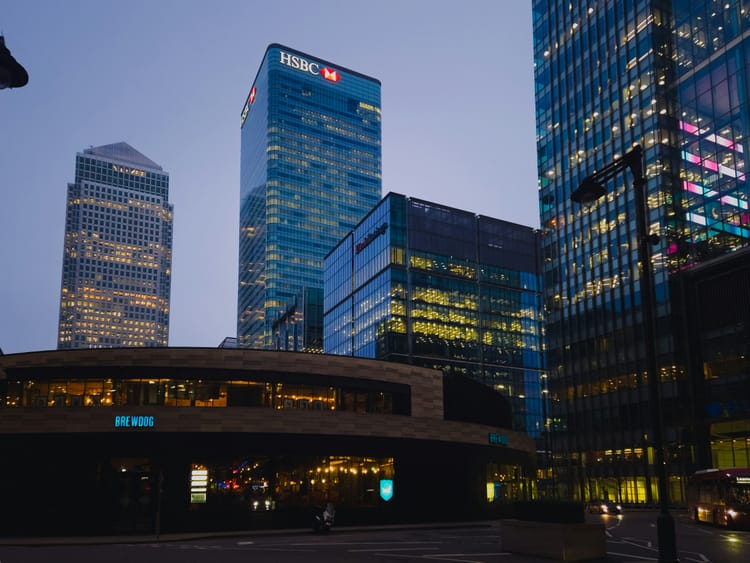Is fashion on the cusp of a circular reinvention?

With garment waste still accumulating in landfills and ultra-fast fashion brands gnawing at established players’ market share, the sector appears very far from decoupling revenue from new production. And yet, recent data and industry initiatives suggest the fashion landscape could look dramatically more circular five years from now.
Earlier this year, CSO Futures published a report taking stock of the fashion sector’s (painfully slow) sustainable transformation: in 2023, less than 1% of fibres used in apparel manufacturing came from post-industrial and post-use recycled textiles, while the production of virgin fossil-based synthetic fibres rose from 67 million metric tonnes in 2022 to 75 million metric tonnes in 2023.
Structural barriers and market dynamics are making it incredibly difficult for apparel brands to move away from linear to circular business models – and with professional SHEIN resellers now invading pre-loved platforms such as Vinted to make a profit, even successful circular initiatives are at risk of losing the positive impact they were born to create.
The silver lining is that industry recognises the existential crisis it finds itself in – between increased competition from ultra-fast fashion and accelerating climate risks threatening their entire business models. Jules Lennon, Fashion Initiative Lead at the Ellen MacArthur Foundation (EMF), is seeing first hand how hard brands are working to tackle this – and how successful industry collaboration can be.
Impact of circular initiatives to date
EMF ran the Jeans Redesign project from 2019 to 2023 to demonstrate that jeans could be designed to be fit for the circular economy.
“At the time, there might have been durable garments, or garments with recycled content, or garments that were designed to be repaired, but definitely not all those things at the same time and more. That project showed it is possible, whether you’re high-end or high street,” Lennon says.
Thanks to the programme, more than 1.5 million pairs of redesigned jeans made to be remade, reused and recycled were brought to market in 2023 – three times more than the previous year. Circular design guidelines were developed with input from 80 experts across industry, academia, and NGOs – and these now guide the design principles of the 100 brands, retailers, garment manufacturers and fabric mills that participated in the initiative.
Chloé redesigned more than 90% of its jeans to be circular, and Weekday (part of the H&M Group) redesigned 40% of their portfolio to be fit for a circular economy.
At the same time, startups like Depop, Vinted or Vestiaire Collective have demonstrated the commercial potential of more circular business models: Vinted only became profitable in 2023, but already quadrupled its profits in 2024, with revenue climbing to €813.4 million.
Evolving regulations pushing garment circularity
The progress achieved to date is as much a result of industry collaboration and innovation as it is related to new regulations being implemented in the EU, but also in California.
Within Europe, The Ecodesign for Sustainable Products Regulation (ESPR), which entered into force in July 2024, created ‘ecodesign requirements’ around durability, reusability and reparability, as well as recycled content, for almost all categories of physical goods.
It is complemented by an extended producer responsibility (EPR) law approved by the European Parliament in September 2025, which will soon require textile producers and retailers to cover the costs of the collection, sorting and recycling of textile waste. The law creates a new global standard for who is responsible for textile waste, since it will also apply to e-commerce producers like SHEIN and Temu, irrespective of whether they are established within or outside of the EU.
And in California, textile companies will also have to set up systems to collect and recycle post-consumer waste, including used clothes, by 2030, or face fines of up to US$10,000 per day – US$50,000 per day for intentional violations.
“If we're thinking about a comprehensive circular economy approach, we need extended producer responsibility to be part of that solution,” explains Lennon. However, she notes that the policy itself is “a starting point” and needs to evolve to truly deliver circular economy outcomes.
“Often, when we talk about EPR policy today, it can leave opportunities untapped if it only focuses on the downstream activities like recycling, but you could design EPR to also drive upstream action,” she adds, echoing comments made by Karndean Global Sustainability Director Jamie Shaw at a recent CSO Futures webinar.
Last year, the Ellen MacArthur Foundation published a report on how EPR policies should be shaped to encourage circular design, extend the use phase of textiles, incentivise funding for garment recovery at scale and address pollution impacts.
“At the same time, these policy mechanisms are far more effective if they are coupled with industry action. Like all systems change, there's no one silver bullet, and it all has to happen hand in hand,” Lennon says.
From recycled materials to new garment displacement
As a result of this regulatory shift combined with industry collaboration, investing in circularity has become the norm.
A few (of many) examples include Gap Inc., Houdini and Target’s respective commercial partnerships with Swedish textile-to-textile recycling firm Syre – an H&M-founded circularity venture; and Chanel’s new subsidiary Nevold, dedicated to recycling fashion materials at scale and commercialising the resulting products.
H&M, which is regularly commended for its sustainability initiatives, used nearly 30% of recycled materials last year.
But the circularity conversation is starting to move from recycled content and circular design to actually displacing new garment sales. Recent data published by UK charity Waste and Resources Action Programme (WRAP) is helping brands understand the impact of circular business models.
WRAP’s research, focused on the UK market, shows that for every 5 items repaired, 4 displace a new purchase – resulting in a displacement rate of 82.2%; and for every 5 preloved items bought, 3 displace new purchases – a displacement rate of 64.6%.
At the Ellen MacArthur Foundation, the end of the Jeans Redesign programme opened the door to a new initiative, called Fashion ReModel. The scheme unites Arc'teryx, Crystal S.A.S, Decathlon, eBay, H&M Group, and its brands ARKET, COS and WEEKDAY, John Lewis, Primark, Reformation, Tapestry and Zalando behind the common goal of breaking the link between revenue and new garment production.
Lennon explains that companies that join the programme set an ambition to increase their percentage of revenue from circular business models over a period of time. “They report progress to us every single year, but it's in absolute terms, and what that means is that to achieve this percentage revenue, you would have to begin displacing linear sales, and that is something really exciting,” she adds.
New startups are banking on the rise of the repair and reuse model, and adding a social lens to their work: United Repair Centre, for example, offers B2B clothing life extension services to apparel brands while creating new jobs for people distant from the labour market.
The SHEIN contradiction
And yet, at the same time, ultra-fast fashion brands such as SHEIN and Temu, which run on an extremely linear business model of short-lived trends, cheap production and extra-fast delivery, are gaining popularity and market share.
This trend led to a 7.5% rise in fashion-related emissions in 2023, after seven years of flat to declining emissions.
Lennon notes that one of the things Fashion ReModel partners are investigating is “the systemic barriers that no one organisation can overcome alone”: for example, the fact that consumers are now used to cheap clothing and not necessarily willing to pay more for sustainability.
To remedy this issue, the group is focused on collective business action – with more details expected to be released in early 2026. But it is also looking at policy change. “How do you actually level the playing field to help make circular business models cost -competitive with linear because today, some of the policies mean that circular economy decisions are penalised rather than being incentivised,” she explains.
France’s recent bill attempting to curb ultra-fast fashion through environmental fines and advertising bans may be a start, but Lennon warns that there is still “a significant knowledge gap around the types of policies that could actually help make the economics work”. By the second quarter of 2026, EMF will release the findings of its research and economic modelling on the topic.
Making circularity fashionable
The contradiction between fashion brands’ efforts to become more sustainable and circular and the rise of ultra-fast fashion points to a gap in the sector’s strategy – somewhere between circular design and end-of-life recovery.
“What happens in between? How are businesses delivering those [circular] products to customers? How are these being incentivised? What does that look like at point of purchase, at point of sale? What kind of nudges are being used – that we know are used exceptionally well in the linear economy? How can we successfully apply that to the circular economy? And I think this is where some of that actually gets really fun,” says Lennon.
In other words, what are brands doing to make circular products the more desirable option? She gives the example of a traditional brand launching a resale platform and incentivising existing customers to engage with it. “Do they offer you a voucher off another resale transaction, or do they offer you money off their traditional linear sales? I think that already gives you a great insight into how serious they are about this.”
The fashion industry is the ultimate trend-setter, “rooted in reinvention” – and now it must put its creativity at the service of circularity. “They have the power to actually shape culture, to shape trends, to shape desire. And ultimately, if this becomes the heart of their business case, and this is the way that they want to scale their business and generate revenue, then how they offer these services in innovative, engaging, personalised, accessible, enjoyable ways, will become part of their core business as well,” Lennon adds.
It’s definitely early days, but examples like eBay’s Endless Runway series of pre-loved runway shows at the world’s top Fashion Weeks this month are reasons to hope this shift is finally starting to happen.







Member discussion